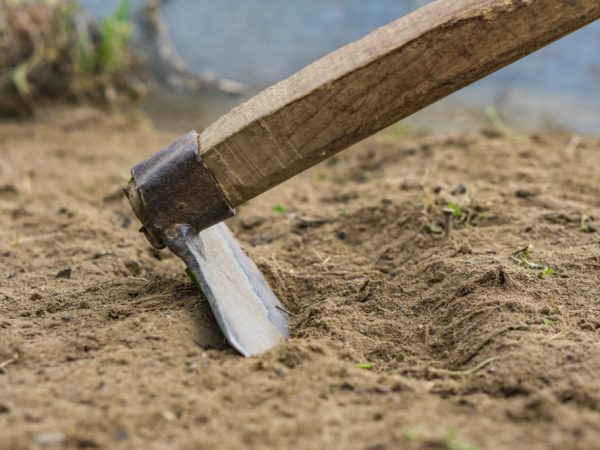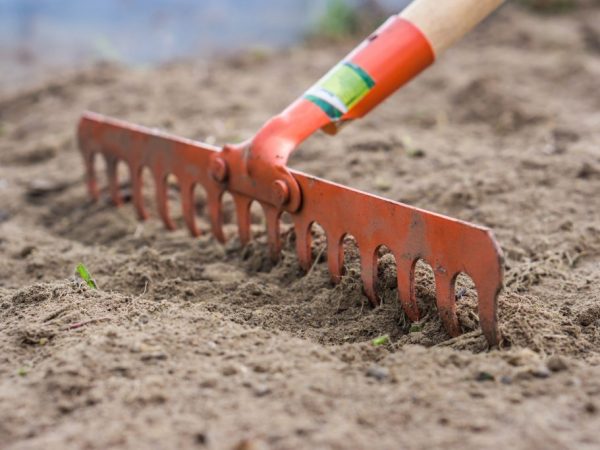How to prepare the soil for garlic
Preparing the land for planting garlic is a responsible event for gardeners. This culture is indispensable on our table, therefore, it is necessary to take into account all the components on which its yield depends: the quality of seed material, regular watering, top dressing, weeding and the selected area. Properly prepared soil is the key to an excellent harvest, so vegetable growers try to take into account all the nuances and carry out all the measures for its preparation in accordance with all requirements.

Preparing the soil for garlic
Favorable predecessors
Preparing garlic for planting begins with determining the location. Every year it is necessary to change the location of the culture, the same area can become a focus of various painful conditions and infections. Therefore, it is highly discouraged to use last year's place: the same site will only fit in 3-4 years.
Good predecessors of the plant are:
- plants from the pumpkin family;
- legumes (especially peas);
- early ripening cabbage and cauliflower;
- greens (salad);
- winter rye;
- early roots.
The plot must stand for some time without plants so that the earth can recover for planting garlic. This culture is very finicky, it needs good lighting and loves a lot of space. If there is not enough space in the summer cottage or garden, then the plants can be added to strawberries, cucumbers, black and red currants, raspberries and gooseberries. Garlic is even able to protect roses from blackness, and it will scare away many pests from itself.
Advice
The culture is not recommended to be planted near cabbage, peas and beans - they do not tolerate it, as it inhibits their growth and development. Plants of the family Solanaceae and Bulbous plants act as unfavorable predecessors. It is not recommended to plant a crop after onions - bulbous ones are affected by the same pests, so the garden bed after them can only be used after several years.
Seat selection
Preparing a bed for garlic needs to be done in the fall. What kind of soil for garlic will increase crop yields? Neutral soil for culture is the best option, it grows well and bears fruit on such a soil. The acidity of the earth is determined in the following ways:
- weeds indicate high acidity: if there are a lot of them (plantain, horsetail, buttercup), then most likely the acidity is higher than normal;
- nettle, clover and field bindweed speak of neutral or slightly acidic soil;
You can determine acidity using vinegar: if you pour a little liquid on the soil, and it hisses and forms bubbles, then most likely it is of normal acidity, that is, it contains the right amount of lime. If, upon contact of the soil with the ground, no contact is detected, then this will indicate increased acidity.
How to reduce soil acidity

Fertilizing the soil
Too acidic soil for the winter is neutralized:
- chalk;
- dolomite flour;
- calcium nitrate.
Lack of nitrogen provokes the appearance of yellow leaves in plants, so the soil is enriched with this chemical element. It is better to apply nitrogen fertilizers in the spring before planting cloves. Fertilizers introduced in the fall are washed out of the ground, so this will not give any result.
Winter garlic produces the best yields on sandy loam or loamy soils. The site should be carefully and deeply dug up to a depth of 30 cm 14 days before planting the culture. For each m², 6-7 kg of humus, about 25 g of superphosphates and 20 g of potassium salt are applied. It is not recommended to fertilize the soil with fresh manure, garlic hates manure, especially if there is a lot of it. The teeth and bulbs become friable, decay, lose their presentation and are poorly preserved. In addition, the manure can contain larvae of various pests, spores of fungal diseases, and various harmful microorganisms.
We prepare the plot sunny, the place must be dry, constant moisture can cause root rot. A low-lying area in a deepened place is not suitable, as melt water will accumulate here. A high place is also not suitable, the wind in winter will blow off snow from it, and this is fraught with freezing of the culture.
Soil preparation
The selected area is dug deeply, the earth is leveled and compacted a little. The width of the beds is from 100 to 110 cm. For the winter, a bucket of peat is added to the clay soil for each m². In loamy soil add 3 kg of humus and compost, 1 tbsp. spoon of superphosphate and potassium sulfate, as well as 200 g of lime. A bucket of loam is introduced into the peat, 2 buckets of clay and a bucket of peat are added to the sandy one.
After that, the bed is treated with a solution of copper sulfate
(1 tbsp. L. Per 10 liters of water). For each m², 1 liter of solution is applied. Before planting the cloves, the area is covered with a film or agrofiber. All experienced gardeners do this.
How to plant spring garlic
Seed material must be planted in the spring in the soil heated by the sun. A medium loamy or light loamy soil is best suited. The site is prepared for the winter, fertilizers and components necessary to neutralize it are introduced into the soil. Sour soil is neutralized by adding lime. For a spring crop, the most acceptable PH is 7.0. The beds are not wide, with bumpers on the sides. The sides will help keep moisture in.
The earth is dug deep and loosened with a rake. A spring crop is planted in April, the soil is treated with a salt solution before that (3 tablespoons per bucket of water). The planted bulbs or cloves are covered with earth, the soil is mulched. For this, wood shavings, sand or sawdust are suitable.
How to plant winter garlic
The culture brings high yields on sandy loam soil. They plant their teeth in the fall, the optimal time is mid-October. Until that time, the culture will have time to take root, but not yet sprout. Two weeks before planting, the site is deeply dug up and humus is introduced (5-6 kg per m²), 30 g of superphosphate and 20 g of potassium salt.
This completes the preparation of the garden for winter garlic, no more activities are required. In the spring, you will only need to remove brushwood and mulch, as well as provide the culture with the necessary care. Novice gardeners are often faced with the problem of low yields, the fault of which is the improper preparation of the site. Timely prepared land for garlic will ensure a good crop harvest at the end of summer.
On a garlic bed, rows are made at a distance of 12-15 cm from each other. The preparation of garlic for planting consists in the selection of high-quality seed material and disinfection of the cloves. The head is disassembled into teeth and disinfected in a 0.1% solution of potassium permanganate or 1% copper sulfate. It remains only to plant the garlic and mulch the garden.
Chives of winter garlic are planted with the sharp ends up, to an average depth so that they do not freeze out. The garden bed is mulched with a thin layer (5 cm) of peat or sawdust. You can spread brushwood on top so that the mulch does not spread during the wind.In the spring, you will only need to remove brushwood and mulch, as well as provide the culture with the necessary care. Novice gardeners are often faced with the problem of low yields, the fault of which is the improper preparation of the site. Timely prepared land for garlic will ensure a good crop harvest at the end of summer.


